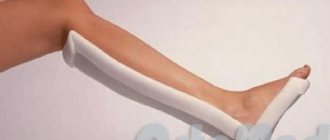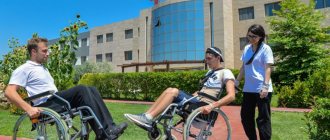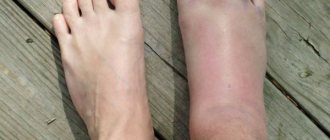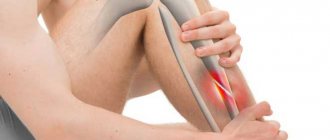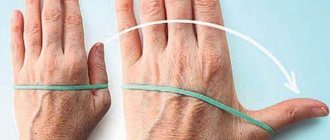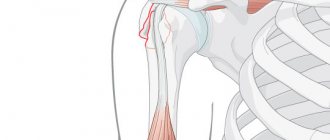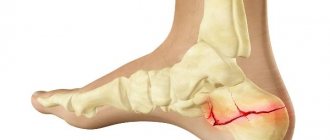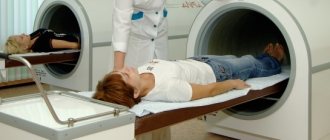Injuries of all kinds are considered to be the most common problem that a person faces. For quick recovery after a bone fracture, it is recommended to use ointments during the rehabilitation period. Their use is recommended only if the victim had a closed type of injury and there was no damage to the skin area. In addition, do not forget that the ointment is a medicine, so it should be used only on the recommendation of the attending physician and under his supervision. Otherwise, you can harm the body.
The role of ointments during a fracture is underestimated by many. However, victims should know that their use makes it possible to relieve swelling, pain, and improve blood supply to tissues. When using ointments after a fracture, you should remember that each has a certain effect, which should be clarified before use. They are: decongestant, anti-inflammatory, healing, warming, analgesic.
Painkillers
Considering that a fracture is always associated with a constant sensation of pain, the primary task that should be performed is pain relief. Constant use of oral medications harms the body, so pain-relieving ointments come to the rescue.
The ointment, which allows you to relieve pain in the area of the fracture, has the ability to quickly absorb into the skin, entering directly into the bloodstream of the human body.
Pain relieving ointments include:
- Diklak. This ointment is considered multifunctional. It is used not only for fractures, but also has a positive effect on arthritis, arthrosis and radiculitis. Diclofenac has anti-inflammatory, anti-edematous and analgesic effects. However, like any medicine, it has a number of contraindications and side effects.
- Nise. Within a short period of time, it relieves pain in the area of the body that has been injured and relieves inflammatory symptoms. However, it is quickly addictive, so it should not be used for more than two weeks.
- Ketonal. Relieves inflammation, pain and swelling in the damaged area of the body. It should not be used by children under 12 years of age.
Recommendations for use
The product is evenly applied in a thin layer to the affected areas of the body and gently rubbed for 2-3 minutes for better absorption of the components. Before using the gel, the skin must be washed and cleared of other medications and cosmetics. Approximately 10 minutes after applying the drug, when the alcohol has evaporated, it is recommended to apply a vapor-permeable soft bandage.
The procedure should be repeated 2–4 times a day. After using Dolobene, it is advisable to refrain from active movements for 2-3 hours. It is optimal to use the gel while resting or at night. The course of treatment depends on the intensity of pain and inflammation. Average duration: 4–7 days. It is not advisable to use the drug for more than two weeks in a row.
During the treatment period, it is necessary to protect the skin from ultraviolet rays: postpone visiting the solarium, do not expose exposed areas of the body to the sun. Otherwise, the risk of burns, age spots, and photoaging increases.
Decongestants
Swelling is the most common consequence after a fracture. This is due to the fact that blood circulation in the area of the injured area was impaired due to severe damage to the blood vessels. An ointment that relieves swelling allows tissue fluid to completely dissolve and increase lymph outflow.
Decongestant medications include:
- Troxevasin. It is an excellent remedy for relieving puffiness. It has virtually no contraindications. The only thing is that it cannot be used by women in the first trimester of pregnancy.
- Heparin ointment. It has vasodilating properties, promotes blood thinning and prevents the formation of blood clots;
- Lazonil. It not only relieves swelling, but also reduces inflammatory processes occurring in the body and helps reduce pain.
How to relieve swelling
An inexpensive and effective ointment for swelling in varicose veins of the legs and after a fracture is Troxerutin. It has the same name as the active substance. Complete analogs are Troxevasin and Troxevenol. After application, the drugs improve microcirculation, relieve swelling and pain in the extremities.
Anticoagulants sodium heparin and hirudin promote the resorption of blood clots and hematomas at the fracture site. The names of the drugs are Hepatrombin, Lyoton, Heparin, Trombless. They can also relieve swelling after a fracture, like Troxevasin. The active ingredients of decongestant ointments indirectly improve tissue nutrition.
Healing
After the pain has decreased and the swelling has completely subsided, it is time to use products based on bee or snake venom. Thanks to them, vascular tissue expands, the blood is fully supplied with oxygen and the tissue temperature in the affected area increases.
These include:
- Apizartron and Virapin. They contain bee venom.
- Viprosal. It is made from snake venom.
The benefits of ointments made from snake and bee venom include improved blood circulation and rapid tissue regeneration. However, if there are wounds on the damaged area, they should not be used.
Features of choosing an ointment
The role of ointments applied to the hand after a fracture is important primarily not for the bone, but for the tissue structures surrounding it, although there will still be an indirect positive effect for osteoblasts since the integrity of the elements surrounding the bone significantly accelerates the regeneration processes. Therefore, you should not judge the effect of using the ointment superficially.
The main positive aspects of the application are as follows:
- anesthesia of the damaged area;
- acceleration of hematoma resorption;
- relieving inflammation and swelling;
- improvement of tissue and cell trophism;
- transport of drugs through the skin to sites of injury;
What ointments are suitable after fractures
Application of ointments is allowed only in case of a closed limb fracture
It is always important to remember that each type of cream or ointment serves one specific purpose, and in combination preparations several more may be added to it. The instructions on the package insert will help you make a more precise choice, but your attending physician will be better able to help you choose a drug.
Note. As a rule, the main significance of ointments prescribed after a fracture of the upper limbs is to relieve or reduce pain.
In addition to the analgesic properties, ointments are divided into certain groups depending on the therapeutic effect they provide:
- for pain relief;
- decongestants;
- anti-inflammatory;
- accelerating healing;
- increasing blood flow to the tissues in the area of the fracture (warming).
Let's look at each of these types in more detail.
Pain relieving ointments
Nurofen Express
If after an injury the victim experiences severe discomfort, he wonders what ointment to apply after a broken arm, and in this case the first priority will be to relieve the pain syndrome, which greatly bothers the person.
Therefore, simultaneously with taking analgesics orally, the use of external preparations, for example, anesthetic ointments, which contain the necessary substances to achieve this goal, is recommended. Thus, they are delivered directly to the sore spot and are quickly absorbed through the skin. As a rule, in addition to the analgesic effect, vasodilation occurs, which increases blood flow and metabolic processes.
Below are the most common and effective drugs that are available in almost every pharmacy:
- Ketonal is an effective topical agent that has an analgesic, anti-inflammatory effect and copes well with swelling. The strengths of the ointment include the fact that all active substances are completely eliminated from the body (do not accumulate), and side effects rarely occur. Not recommended for use by persons under 15 years of age, pregnant women, people with hypersensitivity to aspirin and a high degree of sensitivity to light;
- Nurofen. Thanks to its combined composition, the product effectively copes with pain and inflammatory processes. The analgesic effect is so pronounced that the use of tablets may not be necessary. Restrictions on use: children under 13 years of age, use for no more than 14 days. With prolonged or heavy use, negative manifestations in the form of allergic dermatitis are possible;
- Diclofenac. The name is due to the active ingredient – diclofenac sodium. Tubes may contain different amounts of active substance, which determines the price and effectiveness, so before use you should carefully read the instructions. Traumatologists often recommend this particular remedy when answering patients’ questions about what to smear the arm after a fracture. Diclofenac relieves pain and swelling well, and also reduces the degree of inflammation. However, this remedy has a significant list of side effects and is prohibited for pregnant women, but is generally easily tolerated by patients, so this ointment is used quite often.
- Nise. It has a rapid analgesic effect, but is not recommended for long-term use because it has an addictive effect. The optimal period of use is up to two weeks. The product can also reduce swelling of soft tissues.
Note. There are quite a lot of ointments containing diclofenac sodium. As a rule, part of the name has similar names, for example, the ointment shown in the photo below is “Diklak”.
Diclak Gel 5% 50 g
Self-use of these medications is allowed, so they are available without a prescription. However, it is advisable to consult with an experienced specialist before use.
Ointments for relieving swelling
Troxevasin
The most common phenomenon accompanying a fracture is the occurrence of soft tissue swelling. This is primarily due to injury to small vessels, which disrupts normal blood circulation, activates immune processes in the damaged area, accumulates macrophages, increases the temperature, and signals the nervous system about the presence of damage.
The ointment for a broken arm is intended to reduce swelling by improving blood and lymphatic drainage from the inflamed tissue, enhancing vascular tone and a number of other processes due to which the accumulation of tissue fluid is reduced.
Among the most popular, we will highlight the most effective:
- Heparin ointment contains heparin, a well-known anticoagulant found in the saliva of leeches. When applying the ointment, it quickly penetrates the subcutaneous tissue thanks to the active components and helps thin the blood, which increases its circulation. It is effective in resolving blood clots, bruises and swelling, not only in fractures, therefore it has wider application. Among the positive aspects, it is important to highlight accessibility due to the low price and the possibility of long-term use. Due to anti-coagulation properties, it should not be applied to open wounds; in rare cases, it can cause allergic reactions. When purchasing, you should take into account the small volume of the tube. It is recommended to store the product in the refrigerator;
- Troxevasin. If we talk about what ointment to apply to a hand after a fracture to relieve swelling, then troxevasin can be considered a universal drug that is suitable for almost all people and rarely causes minor side effects. The only contraindication is the third trimester of pregnancy. In addition to fast and strong action, the positive aspects include low cost, unpretentious storage, the possibility of long-term use and storage;
- Lazonil. An effective remedy both for reducing swelling and for relieving after traumatic inflammation, it also exhibits an analgesic effect;
- Lyoton. A more expensive analogue of heparin ointment with an increased concentration of the active component, thereby increasing efficiency.
The note. The medications often described in this article can be produced either in the form of an ointment or in the form of a gel. As a rule, the difference is that the ointment has a thicker consistency, and the concentration of active components remains unchanged.
Ointments that accelerate regeneration and recovery processes
Viprosal
In this section we will talk about what ointment to use after a broken arm to speed up the recovery process. This group of drugs should not be used immediately, but after the pain has disappeared and the swelling has completely disappeared.
The active components in the composition are bee or snake venom protein, which causes local tissue hyperthermia, increases blood flow and oxygen saturation, thereby accelerating rehabilitation processes. Such ointments are most often combined under the general name - healing.
They can be used not only after fractures, but also for sprains or myositis, diseased joints, radiculitis, and so on. It should also be noted that these ointments may have a weak antibacterial effect.
Among them, the following should be particularly highlighted:
- Apizartron (analogue – Virapin) with honey bee venom;
- Viprosal with snake venom (usually viper).
Among the positive features of these ointments, a quick warming effect without addiction should be noted. They can be used for a long period, they significantly accelerate regeneration processes, but cannot be applied to damaged areas.
Important. If you are allergic to bee or snake venom, the use of Viprosal or Apizartron is strictly prohibited!
Warming ointments
Ichthyol ointment
Rehabilitation will be better and faster if you lubricate the area of skin in the area of injury with ointments with a warming effect. They not only have a local hypothermic effect, but also stimulate the use of energy reserves of internal tissues in the fracture zone, increase blood flow and promote vasodilation.
When using, it is important to apply the drugs in very small quantities since they contain strong active ingredients and, if you do not calculate the dosage wisely, you can get a strong burning sensation, even a burn. Over time, the body will get used to the active substances and the response will no longer be so strong.
Doctors quite often advise using not one, but several ointments at the same time, for example, the combination of Finalgon and Capsicam has a good effect:
- Finalgon has a very powerful warming effect, leading to severe tissue hyperemia even when applied in small doses. Because of this, the pain is felt less, since there is a distracting effect. Before use, it is highly advisable to obtain permission from your attending physician, since Finalgon has a significant list of contraindications and can lead to the development of side effects. The price of the drug is quite expensive, but due to the use of small dosages, even a small tube will last for a long time;
- Capsicam has both a warming effect and an analgesic effect. The product begins to act quite quickly. Capsicam has a sufficient list of restrictions and can cause allergic skin reactions: swelling, itching, dermatitis. It is not recommended to use the ointment without first consulting a doctor, as well as for pregnant and nursing mothers, people with diabetes and those taking antibacterial drugs. It is not advisable to apply the product to the same area of skin for more than ten days. The drug has a persistent garlic odor, which must also be taken into account before choosing this product;
- Ichthyol ointment has a dual effect - it warms the tissues and reduces swelling, in addition, a more intensive blood supply is provided at the site of application. Strengths: affordable price and high efficiency. Restrictions: small children (under 7 years old). Features: strong persistent specific odor.
Anti-inflammatory ointments
Drugs belonging to this group are intended to reduce inflammation that develops in the connective tissue at the site of the fracture. The active ingredients in the ointment block the production of certain mediators, which stops the development of the unwanted process. The most popular means are listed in the table below.
Table. Popular and effective anti-inflammatory ointments.
| Name | Action |
| The main active ingredient ketoprofen reduces inflammatory processes, thanks to the accompanying active components it penetrates into the deep layers of tissue and does not cause an addictive effect. Used for fractures, bruises, and other injuries of various etiologies. |
| |
| The active substance ibuprofen is prescribed for inflammatory or degenerative diseases of the musculoskeletal system. Used to treat injuries, bruises and fractures, relieves swelling and reduces inflammation. |
| |
| Thanks to the active component, diclofenc sodium, it has anti-inflammatory, analgesic and some antipyretic effects. |
| The active ingredient is methyl salicylate. Has analgesic and anti-inflammatory effects. |
Anti-inflammatory
This category of ointments allows you to externally relieve the inflammatory process occurring in connective tissues. The pronounced positive effect of the ointment makes it possible to reduce the production in the body of substances called inflammatory mediators. Anti-inflammatory drugs include:
- Fastum gel and Bystrum gel;
- Ibuprofen and Dolgit;
- Voltaren emulgel.
Restoration and healing products
Often, after limb injuries, patients neglect a whole group of drugs - chondroprotectors. Chondroprotectors for fractures of the leg bones and spine are useful for restoring joints during the rehabilitation period.
Such drugs are most often prescribed in cases where age-related changes in the joints develop. After healing of a leg fracture in the ankle area, it is especially necessary to accelerate the regeneration of cartilage tissue. Ointments with chondroprotectors are used for a long time.
Active ingredients: chondroitin sulfate, glucosamine. The first component prevents the destruction of joints and stops degenerative processes that have already begun. If the ointment contains dimethyl sulfoxide, then the product also has an anti-inflammatory effect. Cheap Russian-made ointment with chondroprotective and moderate analgesic effects Chondroitin-Acos.
Inflammation reliever
Glucocorticosteroids have a strong anti-inflammatory effect. This group of drugs is often called GCS. Hormonal drugs when used externally are not as dangerous as when taken orally. Apply only to intact skin.
List of external agents with GCS:
- Akriderm;
- Cutivate;
- Advantan;
- Rederm;
- Lokoid;
- Elokom.
It should be remembered that too long-term use of GCS can lead to skin atrophy. After applying hormonal and other ointments, be sure to wash your hands.
For faster and more effective recovery after a fracture, it is recommended to use drugs from various therapeutic groups. NSAIDs relieve pain and inflammation. Decongestant ointments save you from inevitable injuries. It is imperative to use regenerating agents to recover and move fully after a fracture.

